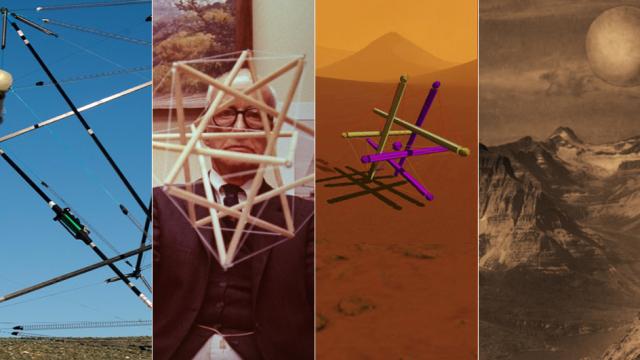NASA’s bizarre Super Ball Bot is unlike any robot ever built — it uses a net of wires and rods to move, and could someday explore harsh exoplanets. It also has an unlikely heritage: It was inspired by the ideas of a visionary from the 1960s building floating cities based on the same concept.
Meet Super Ball, NASA’s First Tensile Robot
This week, the agency uploaded a new video of its Super Ball Bot, which has been under development through the NASA’s Innovative Advanced Concepts program since 2013.
The bot uses a network of tensioned cables and strong rods to roll over terrain — adapting to rough drops and strange geometry in a way that traditional robots can’t. That’s thanks to the fact that its movements are controlled by tensioned wires that let it bounce and react to its surroundings. And crucially, the lightweight design could be folded up into a small package and dropped onto the surface of a planet, like Saturn’s moon Titan.
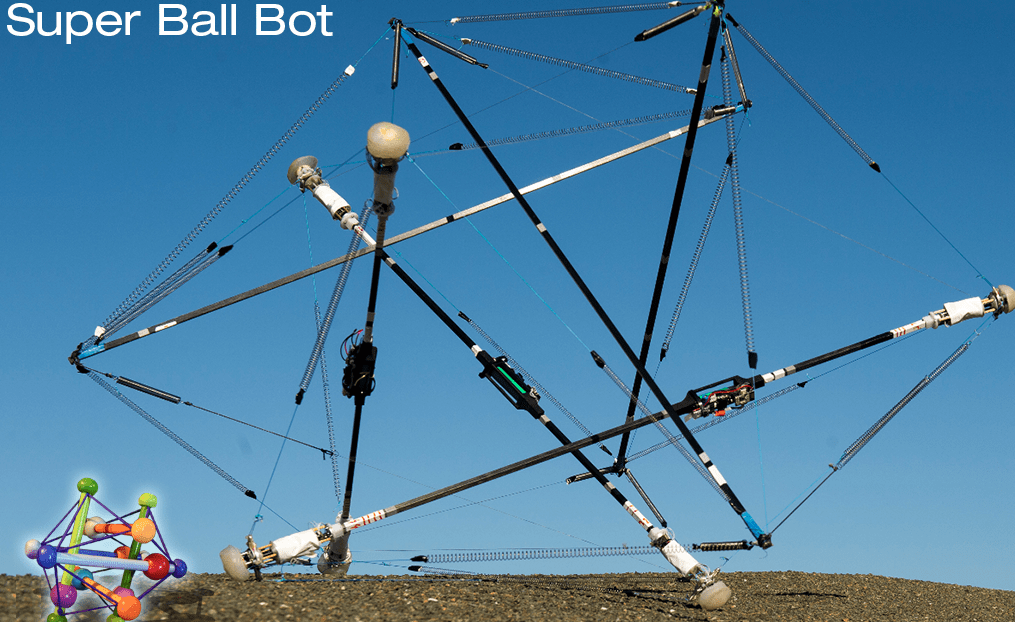
Super Ball is the brainchild of Vytas Sunspiral, a robotics researcher who works on developing robots at NASA Ames’ Intelligent Systems Division. Sunspiral’s focus is on tensegrity robots — or machines that use a hybrid structure of tension and compression elements. It’s a term that was coined by the architect Buckminster Fuller in the early 1960s — and it has a fascinating history.
What Is Tensegrity, and Who Discovered It?
There are two basic types of structures in this world: compressive (basically, pushing) and tensile (basically, pulling).
In architecture, most buildings functions by compression — their columns support the weight of the floors above. But in the 1960s, a number of architects started experimenting with tensile materials, using strong fabric, wires, and other materials that could stretch to create structure.
One of those architects, Buckminster Fuller, was inventing some of the most novel and fascinating structures of the century — his most famous being the geodesic dome. In 1961, he published a paper that described an entirely new type of structure: He called it tensegrity. It combined aspects of compression and tension to create a tensioned network of wires, in which compression elements could co-exist.
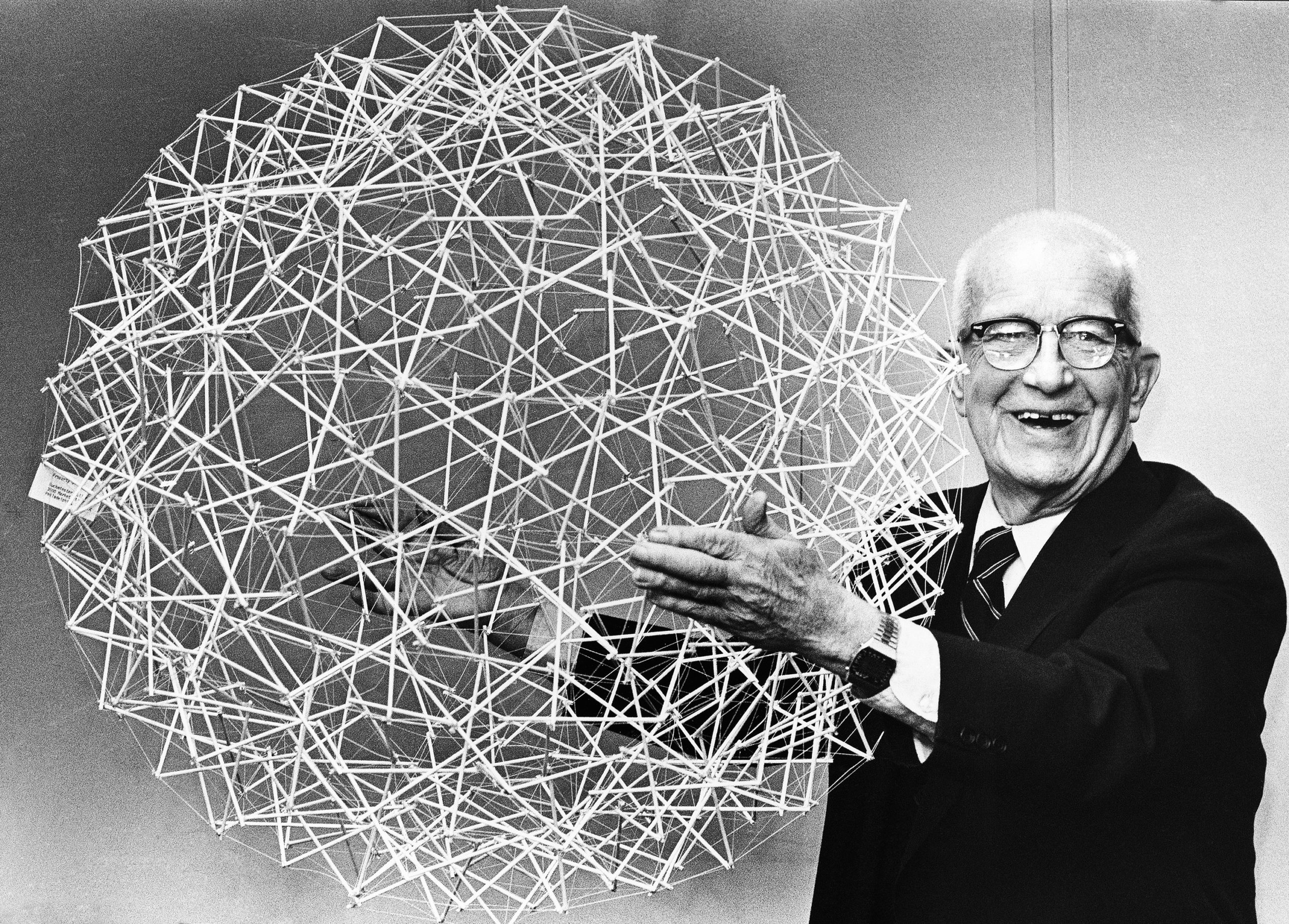
AP Photo/WGI
It was a revolutionary idea — a beautiful hybrid structure that combined the best elements of both systems. It’s also not unlike our own bodies, which use compression elements (bones) and tension elements (muscles) to create movement.

AP
Floating on Cloud 9
Fuller wasted no time imagining what types of buildings and cities he could build using tensegrity.
One famous example was his concept for Spherical Tensegrity Atmospheric Research Stations, aka “Cloud Nines,” which were cities built inside tensegrity domes that used the structural concept to float.
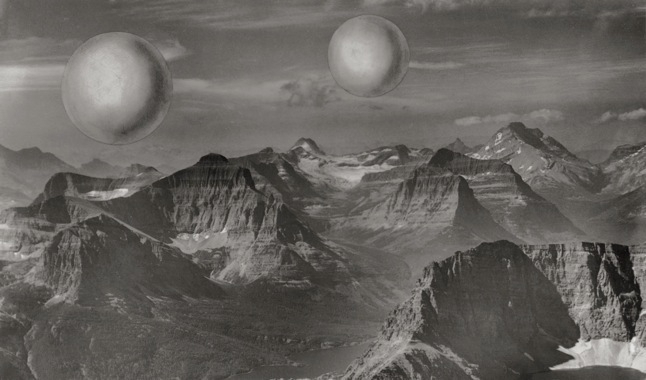
The idea was simple: You could theoretically increase the size of a geodesic dome until it became so strong, it would function like a tensegrity-strengthened balloon, with slightly heated air inside.
“A half mile (0.8 kilometer) diameter geodesic sphere would weigh only one-thousandth of the weight of the air inside of it,” the website Stuff of Genius explains. “If the internal air were heated by either solar energy or even just the average human activity inside, it would only take a 1 degree shift in Fahrenheit over the external temperature to make the sphere float.”
The New Yorker’s Elizabeth Kolbert elaborated in 2008:
He also envisioned what he called Cloud Nines, communities that would dwell in extremely lightweight spheres, covered in a polyethylene skin. As the sun warmed the air inside, Fuller claimed, the sphere and all the buildings within it would rise into the air, like a balloon. “Many thousands of passengers could be housed aboard one-mile-diameter and larger cloud structures,” he wrote.
Of course, Fuller himself acknowledged the surrealism of the Cloud 9 concept.
But tensegrity has been used many times in real life since the 1960s, for example in the work of sculptor Kevin Snelson:
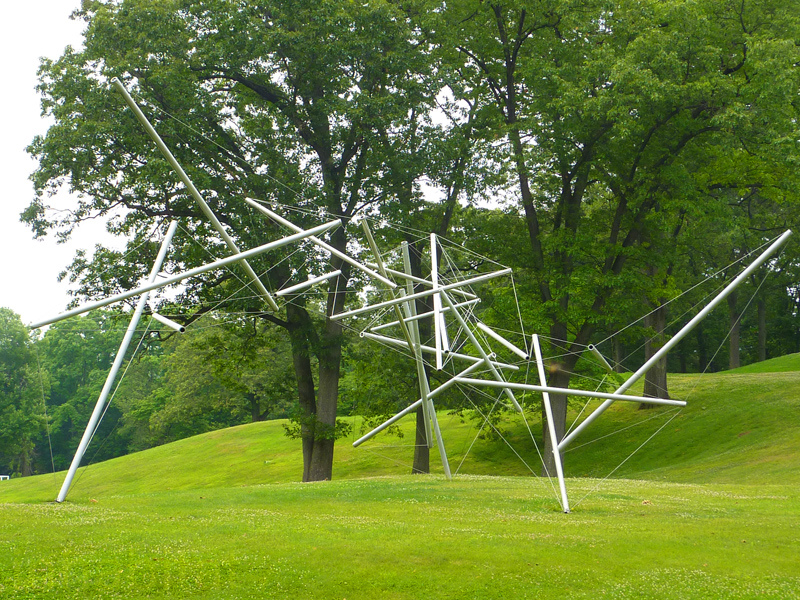
Image: Inhabitat on Flickr/CC
Or in the Kurilpa Bridge in Brisbane, Australia:
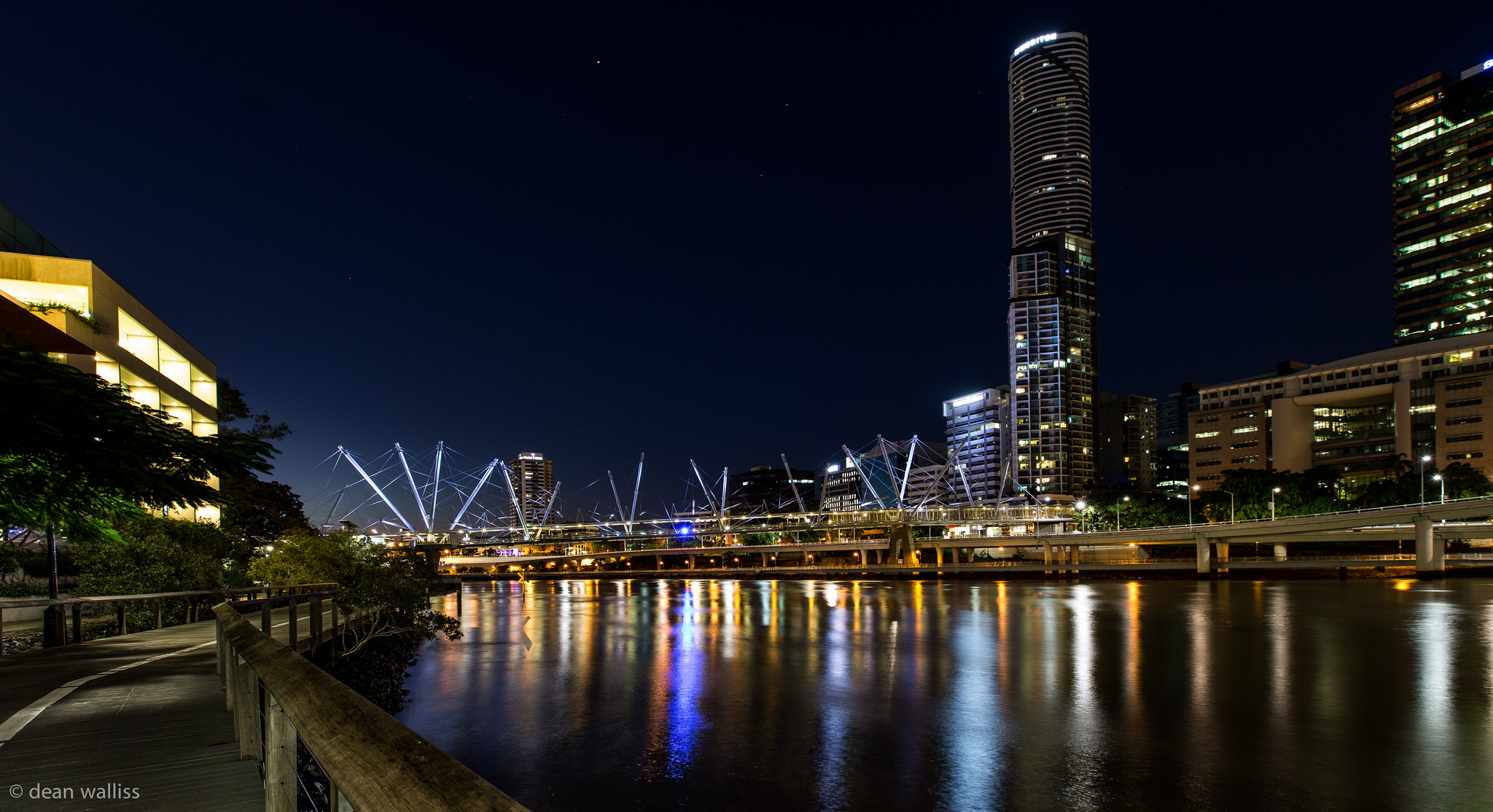
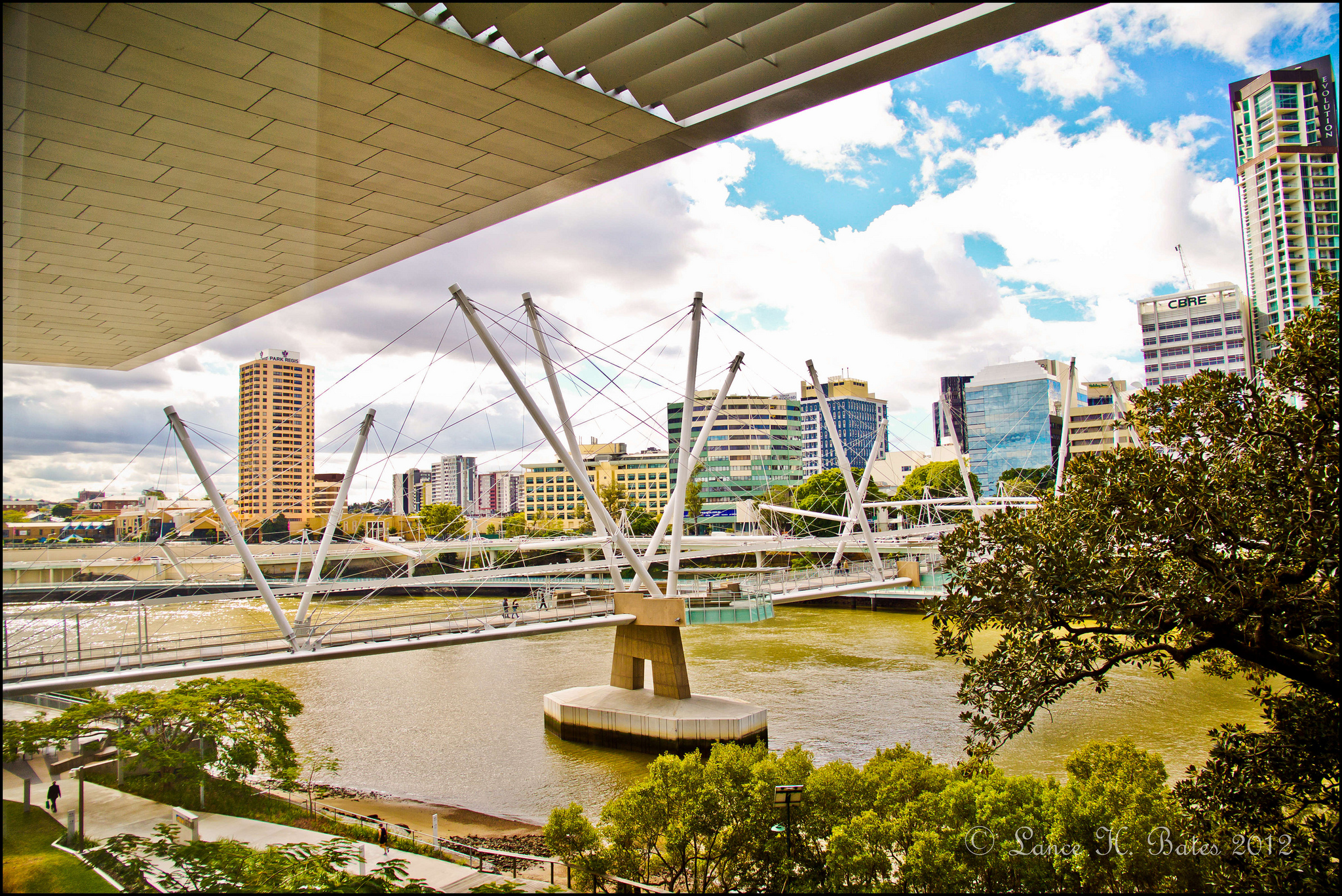
Images: Lance on Flickr/CC; Dean Walliss on Flickr/CC
If NASA’s Super Ball Bot keeps developing, it could eventually take the concept to other worlds. And while Fuller’s idea for a floating city definitely looks like sci-fi to our eyes, so does Super Ball.
In the end, Bucky’s ideas about tensegrity may never end up creating new worlds here on Earth — but it may yet drive the exploration of new worlds in space.
